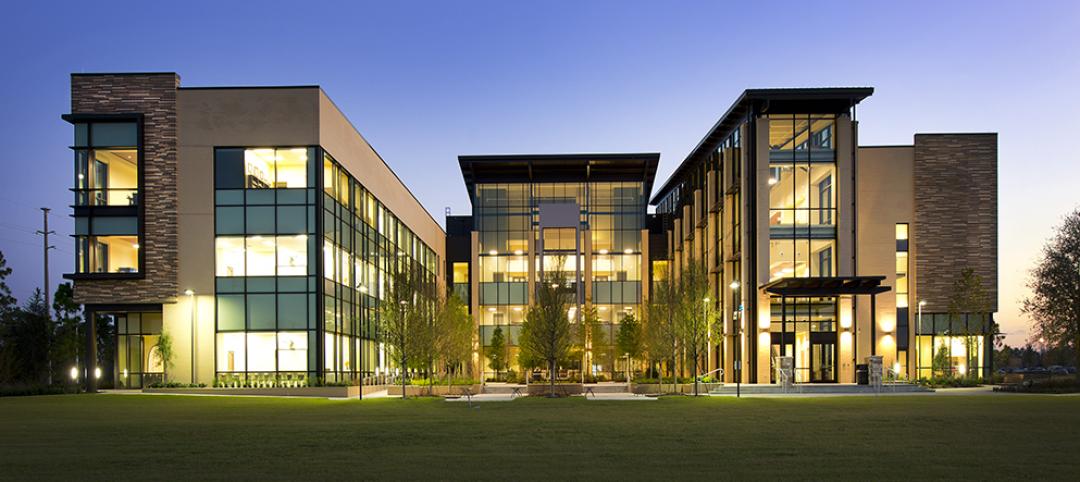American Chemistry Council (ACC) is touting projections in a new report by the International Council of Chemical Associations (ICCA) showing that combining building efficiency improvements-made possible by innovations in chemistry–with lower-carbon fuels could lead to a 41 percent reduction in energy use and a 70& reduction in greenhouse gas emissions by 2050.
Of all the energy used in the U.S., nearly one-third is consumed by the building sector. Improving efficiency is critical, and during the next few decades the amount of energy used by the building sector will increase dramatically (more than 62% by 2050), as will the amount of CO? emissions (more than 87% by 2050), according to the ICCA report.
“The ICCA projections reinforce what we have known for long time – that the chemical industry is an indispensable provider of solutions that improve the energy efficiency of buildings,” said Cal Dooley, president and CEO of the American Chemistry Council. “Nearly every energy-efficient technology is dependent on innovations made possible by chemistry. Our products make the nation’s energy supplies go further while lowering energy costs for businesses and families.”
The ICCA Building Technology Roadmap, which will be officially released this week at the 18th session of the Conference of the Parties to the United Nations Framework Convention on Climate Change in Doha, Qatar, examined the chemical industry’s contributions to energy efficiency and greenhouse gas savings in residential and commercial construction. The report focused on the potential savings from five chemically derived building technologies that are commercially available today: insulation, pipe and pipe insulation, air sealing, reflective roof coatings and pigments, and windows.
According to the ICCA report, energy-saving products installed in homes in the U.S. prevented nearly 283 million tons of CO? emissions in 2010–equivalent to the greenhouse gas emissions of 50 million passenger vehicles. Studies show that if this trend continues, more than 7 billion tons of emissions can be avoided by 2050 in the U.S. alone–equivalent to the CO? emissions of more than 1.2 billion passenger vehicles.
Averaging at least 75% of the heat loss in households, single-family homes provide most of the potential for energy savings within the residential sector. In 2010, the cumulative energy savings from chemically derived building products in U.S. residential buildings was 46 times greater than the energy required to produce the products. +
Related Stories
| Nov 28, 2012
Project team to showcase design for first mixed-use retail center of its kind in Mexico City
Project reaching construction milestone, offering national model for urban development in Mexico.
| Nov 28, 2012
Cummins announces ratings classification for data center power systems
The Data Center Continuous ratings span the range of Cummins Power Generation’s high horsepower diesel generator sets, from 1 MW up to 2.5 MW, and will apply to both 50 Hz and 60 Hz configurations.
| Nov 28, 2012
Francis Cauffman appoints Stainbrook Director of Higher Education
Stainbrook has 16 years of experience as a strategic planner and urban designer working on complex projects on- and off-campus.
| Nov 27, 2012
SFIA releases technical guide for cold-formed steel framing products
The 114-page book covers both structural and non-structural applications, including section properties of SFIA member product profiles, and complete load and span tables for most applications.
| Nov 21, 2012
Architecture Billings Index positive for third straight month
All regions reporting positive business conditions
| Nov 20, 2012
PC Construction completes Juniper Hall at Champlain College
Juniper Hall is on track for LEED Gold certification from the U.S. Green Building Council.
| Nov 20, 2012
SchenkelShultz-designed Valencia at Lake Nona certified 3 Green Globes
Featuring the latest technologies, the three-story, academic facility includes academic spaces and teaching laboratories, student services, a book store, library, café, a Dean’s suite and administrative offices.
| Nov 14, 2012
U.S. Green Building Council partners with Pearson
Partnership will help further USGBC’s mission by advancing green building education
| Nov 14, 2012
U.S. Green Building Council announces grant from Google to catalyze transformation of building materials industry and indoor health
Focus is on healthy building materials to promote indoor environmental quality and human health
| Nov 14, 2012
USGBC's Greenbuild International Conference and Expo kicks off in San Francisco
7,000 members of the green building industry convene for opening plenary headlined by "Morning Joe" co-hosts Mika Brzezinksi and Joe Scarborough
















